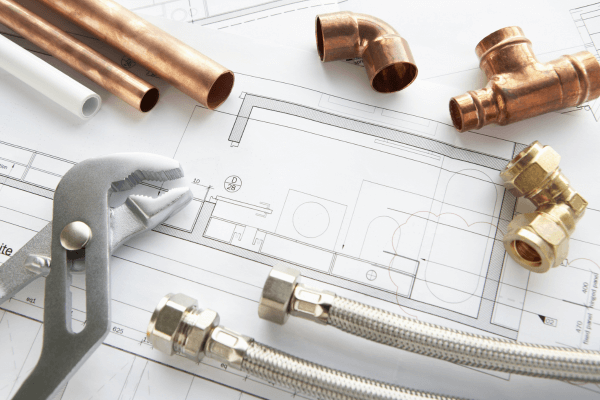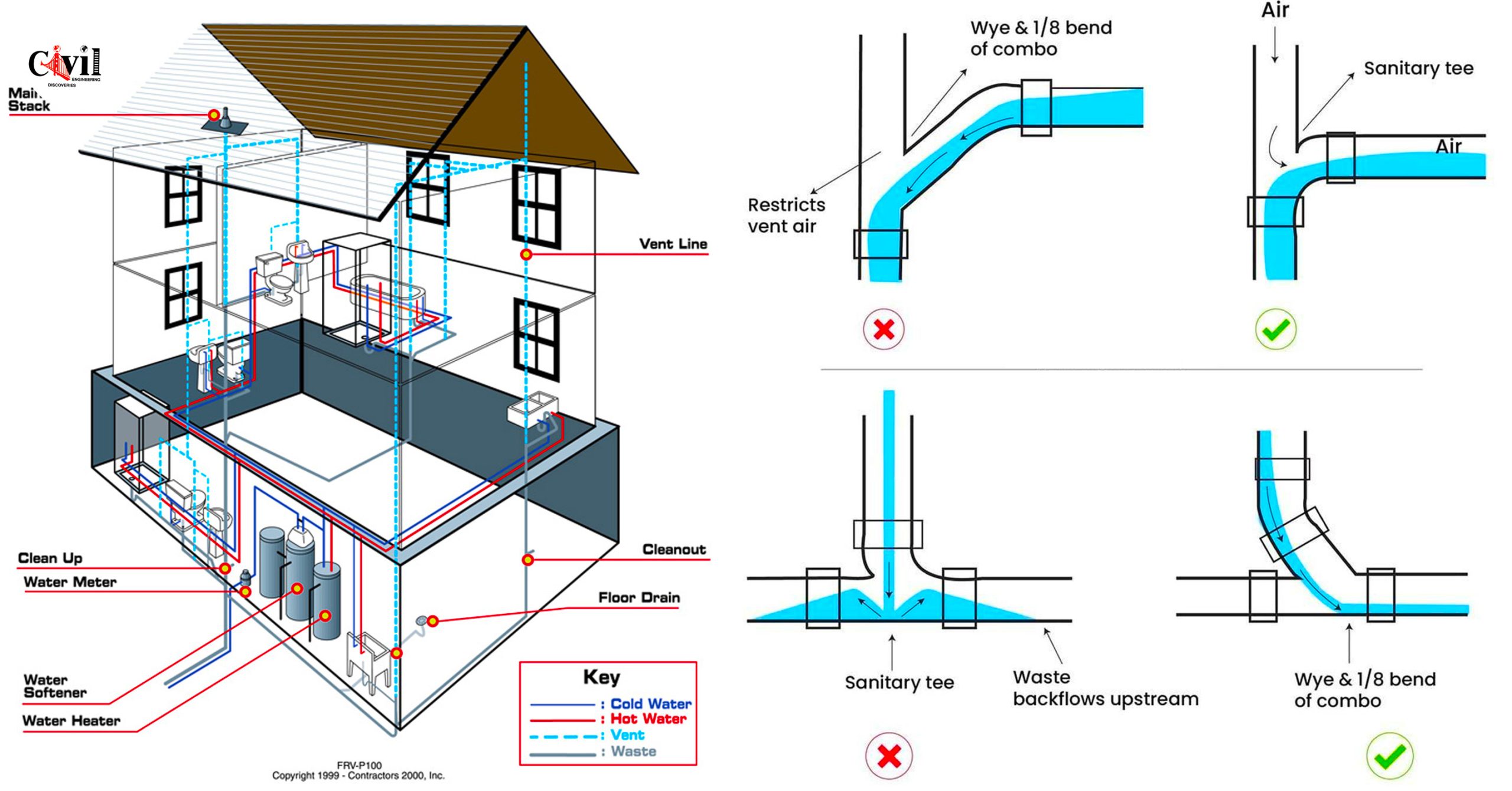The Core Elements of Your Property's Plumbing System
The Core Elements of Your Property's Plumbing System
Blog Article
They are making a number of good annotation on Exploring Your Homes Plumbing Anatomy as a whole in the article down below.

Recognizing exactly how your home's plumbing system functions is crucial for every single house owner. From providing clean water for drinking, food preparation, and showering to safely removing wastewater, a well-maintained pipes system is important for your household's wellness and convenience. In this extensive guide, we'll explore the intricate network that comprises your home's plumbing and deal suggestions on upkeep, upgrades, and managing typical concerns.
Intro
Your home's plumbing system is more than simply a network of pipelines; it's an intricate system that guarantees you have access to clean water and efficient wastewater elimination. Recognizing its elements and exactly how they work together can help you protect against pricey repair services and guarantee whatever runs smoothly.
Standard Parts of a Plumbing System
Pipes and Tubing
At the heart of your plumbing system are the pipelines and tubing that lug water throughout your home. These can be constructed from different products such as copper, PVC, or PEX, each with its benefits in terms of durability and cost-effectiveness.
Components: Sinks, Toilets, Showers, etc.
Components like sinks, bathrooms, showers, and bathtubs are where water is made use of in your house. Comprehending how these components connect to the pipes system helps in detecting troubles and preparing upgrades.
Shutoffs and Shut-off Points
Shutoffs control the circulation of water in your plumbing system. Shut-off shutoffs are vital during emergency situations or when you need to make repairs, enabling you to separate parts of the system without interfering with water circulation to the whole house.
Water System System
Key Water Line
The main water line links your home to the community water system or an exclusive well. It's where water enters your home and is distributed to different components.
Water Meter and Stress Regulator
The water meter actions your water usage, while a pressure regulator makes sure that water moves at a safe pressure throughout your home's pipes system, preventing damage to pipes and components.
Cold Water vs. Warm water Lines
Recognizing the difference in between cold water lines, which provide water straight from the major, and hot water lines, which carry heated water from the hot water heater, helps in fixing and preparing for upgrades.
Drainage System
Drain Pipes Pipes and Traps
Drain pipelines bring wastewater far from sinks, showers, and toilets to the sewage system or septic system. Traps prevent sewer gases from entering your home and additionally catch particles that can trigger clogs.
Air flow Pipes
Ventilation pipes permit air right into the drainage system, stopping suction that could reduce water drainage and create traps to empty. Proper ventilation is vital for keeping the integrity of your plumbing system.
Significance of Appropriate Water Drainage
Guaranteeing appropriate water drainage protects against backups and water damage. On a regular basis cleansing drains pipes and maintaining catches can prevent costly repair services and expand the life of your plumbing system.
Water Heating Unit
Sorts Of Hot Water Heater
Hot water heater can be tankless or typical tank-style. Tankless heating systems heat water on demand, while tanks store heated water for immediate usage.
Just How Water Heaters Attach to the Pipes System
Recognizing exactly how hot water heater link to both the cold water supply and hot water distribution lines helps in diagnosing issues like not enough warm water or leakages.
Maintenance Tips for Water Heaters
Routinely flushing your water heater to get rid of debris, inspecting the temperature settings, and evaluating for leakages can prolong its life expectancy and boost energy performance.
Typical Plumbing Issues
Leakages and Their Reasons
Leaks can occur due to maturing pipes, loose installations, or high water stress. Dealing with leakages immediately protects against water damages and mold development.
Obstructions and Obstructions
Clogs in drains pipes and bathrooms are typically caused by purging non-flushable things or an accumulation of oil and hair. Utilizing drain displays and bearing in mind what decreases your drains can prevent obstructions.
Indications of Plumbing Issues to Watch For
Low tide stress, sluggish drains, foul odors, or unusually high water costs are indicators of potential pipes troubles that need to be resolved immediately.
Plumbing Upkeep Tips
Routine Evaluations and Checks
Set up annual pipes assessments to catch concerns early. Search for indicators of leaks, deterioration, or mineral buildup in taps and showerheads.
DIY Maintenance Tasks
Simple tasks like cleansing faucet aerators, checking for commode leaks utilizing dye tablets, or shielding exposed pipelines in cool climates can stop major plumbing concerns.
When to Call a Specialist Plumbing Professional
Know when a plumbing problem calls for expert experience. Attempting intricate repairs without appropriate expertise can lead to more damage and greater fixing costs.
Upgrading Your Pipes System
Factors for Updating
Upgrading to water-efficient fixtures or replacing old pipes can enhance water top quality, reduce water expenses, and boost the worth of your home.
Modern Pipes Technologies and Their Benefits
Explore innovations like clever leakage detectors, water-saving commodes, and energy-efficient water heaters that can conserve money and decrease environmental impact.
Expense Factors To Consider and ROI
Compute the ahead of time prices versus long-term savings when considering plumbing upgrades. Numerous upgrades pay for themselves through decreased utility expenses and fewer repair services.
Ecological Effect and Preservation
Water-Saving Components and Devices
Mounting low-flow taps, showerheads, and commodes can dramatically lower water usage without sacrificing efficiency.
Tips for Lowering Water Usage
Simple practices like taking care of leakages without delay, taking much shorter showers, and running full lots of washing and dishes can preserve water and lower your energy bills.
Eco-Friendly Pipes Options
Consider lasting pipes materials like bamboo for flooring, which is durable and green, or recycled glass for counter tops.
Emergency situation Readiness
Actions to Take Throughout a Plumbing Emergency situation
Know where your shut-off valves are located and just how to switch off the water system in case of a burst pipeline or major leakage.
Relevance of Having Emergency Situation Contacts Handy
Maintain get in touch with info for local plumbers or emergency situation services conveniently offered for quick reaction throughout a plumbing crisis.
Do It Yourself Emergency Fixes (When Applicable).
Short-lived repairs like making use of duct tape to spot a leaking pipeline or positioning a container under a leaking faucet can lessen damage till an expert plumber shows up.
Conclusion.
Understanding the makeup of your home's plumbing system equips you to maintain it successfully, saving money and time on repair work. By adhering to regular upkeep regimens and staying notified concerning modern plumbing modern technologies, you can ensure your pipes system runs successfully for many years to come.
HOW YOUR PLUMBING SYSTEM WORKS
Which Pipes Do What?
Blue lines = fresh water supply entering the building
Red lines = hot water supply entering the building
Grey lines = pipes carrying waste away from the building and venting pipes carrying gases away from the building (through the roof)
YOUR MAIN PLUMBING SYSTEMS
There are two main plumbing systems that support your home s basic plumbing needs one that brings clean water into your home, and one that sends dirty water away from your home. Connected to the toilet, bath, shower, and other faucets in your home, these two systems keep your water flowing in the right directions.
ACCESSING FRESH WATER
Fresh and clean water is brought into your home through the main water supply line . Filtered through one pipe, this water is pressured to flow into the various fixtures in your home at any given time.
This water can be sourced from a well located on your property, a pond or river (mostly cottages), or, as in most cases, from the city s municipal water treatment centre. However, it is important to note that water that is untreated, such as the water siphoned from ponds or rivers, may not be safe to drink. Personal water supplies always need to be treated for hardness and contaminants before consumed.
MUNICIPAL WATER SUPPLIES
Improve taste and odour
Remove sediment
Eliminate hardness
Reduce chlorine
COLD WATER SUPPLY VS. HOT WATER SUPPLY
Cold water flows into your home or building through the service line, which then distributes hot or cold water to your fixtures. This line is most commonly run through a central column that runs floor to floor. Hot water runs in short and straight pipes as the longer the pipeline, the more heat that will be lost in the transfer. Having shorter pipes also allows residents to access hot water more quickly.
WASTE WATER SYSTEM
Your wastewater system is divided into two parts pipes that send wastewater away from your home and venting pipes that send sewer gas away from your home. Sewage water travels through pipes that flush the water and waste towards local sewers that are operated and managed by your city or town. Most sewer systems rely on gravity to move the wastewater to where it needs to go.
The further away from your toilet or sink, the larger wastewater pipes become. This allows for waste to be disposed of from various parts of your home or business at once without pipe blockages. The angle and flow of these pipes are also essential for keeping your waste pipes clear of build up.
https://harrisplumbing.ca/how-your-home-plumbing-system-works/

HOW YOUR PLUMBING SYSTEM WORKS
Which Pipes Do What?
YOUR MAIN PLUMBING SYSTEMS
There are two main plumbing systems that support your home s basic plumbing needs one that brings clean water into your home, and one that sends dirty water away from your home. Connected to the toilet, bath, shower, and other faucets in your home, these two systems keep your water flowing in the right directions.
ACCESSING FRESH WATER
Fresh and clean water is brought into your home through the main water supply line . Filtered through one pipe, this water is pressured to flow into the various fixtures in your home at any given time.
This water can be sourced from a well located on your property, a pond or river (mostly cottages), or, as in most cases, from the city s municipal water treatment centre. However, it is important to note that water that is untreated, such as the water siphoned from ponds or rivers, may not be safe to drink. Personal water supplies always need to be treated for hardness and contaminants before consumed.
MUNICIPAL WATER SUPPLIES
COLD WATER SUPPLY VS. HOT WATER SUPPLY
Cold water flows into your home or building through the service line, which then distributes hot or cold water to your fixtures. This line is most commonly run through a central column that runs floor to floor. Hot water runs in short and straight pipes as the longer the pipeline, the more heat that will be lost in the transfer. Having shorter pipes also allows residents to access hot water more quickly.
WASTE WATER SYSTEM
Your wastewater system is divided into two parts pipes that send wastewater away from your home and venting pipes that send sewer gas away from your home. Sewage water travels through pipes that flush the water and waste towards local sewers that are operated and managed by your city or town. Most sewer systems rely on gravity to move the wastewater to where it needs to go.
The further away from your toilet or sink, the larger wastewater pipes become. This allows for waste to be disposed of from various parts of your home or business at once without pipe blockages. The angle and flow of these pipes are also essential for keeping your waste pipes clear of build up.
https://harrisplumbing.ca/how-your-home-plumbing-system-works/
We had been shown that write-up on Understanding Your Home's Plumbing Anatomy from a buddy on our other domain. Are you aware of another individual who is fascinated with the niche? Why not share it. Kudos for your time. Kindly check our website back soon.
View More Report this page